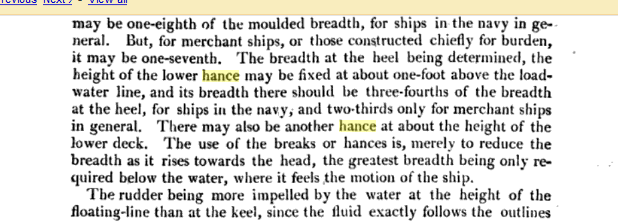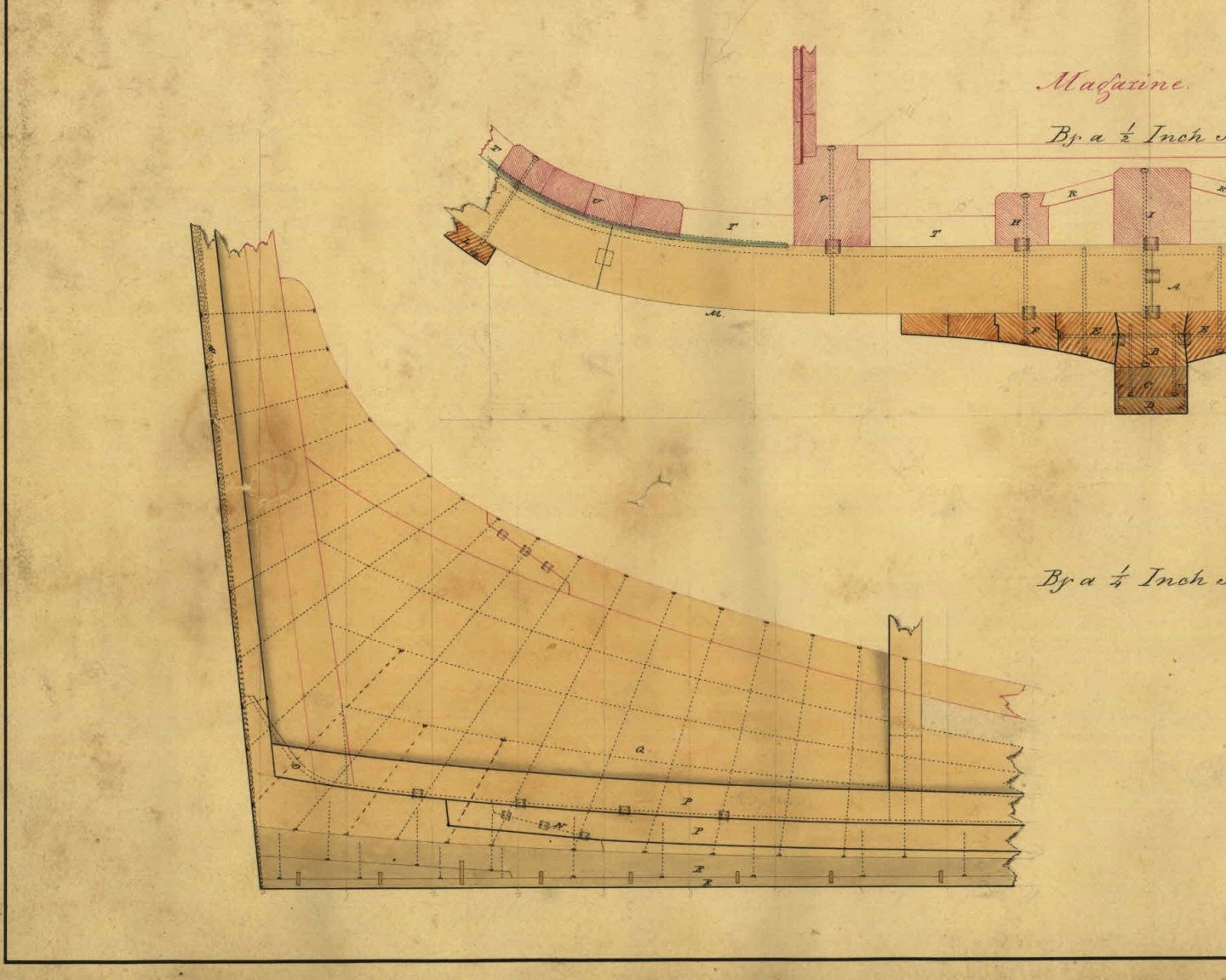-
Posts
3,039 -
Joined
-
Last visited
Content Type
Profiles
Forums
Gallery
Events
Everything posted by bruce d
-

Retired and ready to build my first model!
bruce d replied to lraymo's topic in New member Introductions
Welcome to MSW. It is no surprise that there are a few (!!!!!) other retired folks here so just get comfortable and settle in. Looking forward to a build log, have fun 👍. Bruce -

Ships vs Boats
bruce d replied to Mike from Aus's topic in Using the MSW forum - **NO MODELING CONTENT IN THIS SUB-FORUM**
It is a General Purpose vehicle = Jeep 😉 -

New to the community and wooden models
bruce d replied to Harland Wolff's topic in New member Introductions
Hello Harland Wolff (is there a message in that name? 😉), welcome to MSW from Sussex. It is a great place to learn and get support with those new tasks you will encounter. Hope we see a build log from you. Bruce -
Were the guards actually intended to resist that type of impact? I assumed (I know, assumed = guessed) that the metal guardsover and around skylights spanned wooden slats/beams and their function was to add additional protection, not do the heavy work. This is based on a contemporary model, details long forgotten. It had a metal grating across the skylights clearly in the role described above, cutting out the minimum of light while offering protection against most whoopsies. HTH Bruce
-
I am going to butt in here. If the MDF is wetted and then clamped as you have shown, drying will be problematic. The only place for the moisture to escape is the exposed edges. This method can bite, and I am speaking from experience. May I suggest you get room temperature air circulating across those wetted surfaces? HTH Bruce
- 160 replies
-
- Alert
- vanguard models
-
(and 1 more)
Tagged with:
-

Hand Saw Recommendations
bruce d replied to Jonathan_219's topic in Modeling tools and Workshop Equipment
Thank you, Mike, for that useful and colourful description. It makes perfect sense. Welcome to the forum, sounds like you have the skills many of us wish for. Why not post an introduction in the 'new members' section? https://modelshipworld.com/forum/3-new-member-introductions/ Regards, Bruce -
👍 Fantastic.
-
Mind if I look over your shoulder? BTW, I am sending you via PM the original PDF from which I took the article. There is no additional information there but you may want to see if the photographs can be enlarged any further for details.
- 433 replies
-
- open boat
- small boat
-
(and 1 more)
Tagged with:
-

Electric sanding belt file
bruce d replied to Don Case's topic in Modeling tools and Workshop Equipment
That is exactly what a 'service representative' said when I complained about an expensive machine that broke in the 1980's. Good thing I married a lawyer.🤐 -

HMS EURYALUS by Matiz - FINISHED - scale 1:56
bruce d replied to matiz's topic in - Build logs for subjects built 1801 - 1850
Beautiful work, Matiz. -
Hello Mauro and welcome to MSW from chilly southern England. Very nice engine, looking forward to seeing more of your work.
-

Deadwood
bruce d replied to Don Case's topic in Building, Framing, Planking and plating a ships hull and deck
Also, this should be useful to understand the placement of a hance. From 'Naval Architecture' by John Knowles 1822: -

Deadwood
bruce d replied to Don Case's topic in Building, Framing, Planking and plating a ships hull and deck
I was totally wrong. Turns out the cut-out, called a hance, indicates a step in the dimensions of the rudder. From Steel: This is pretty much in line with the comments from experienced members earlier in the thread. -

Deadwood
bruce d replied to Don Case's topic in Building, Framing, Planking and plating a ships hull and deck
I thought that feature at the top of the rudder was to allow a yoke to be dropped in place for emergency steering. -

Deadwood
bruce d replied to Don Case's topic in Building, Framing, Planking and plating a ships hull and deck
This may help. Below is a detail from a drawing showing how sternposts were connected to keels in Woolwich shipyard (circa 1820). The subject is a 74 gun ship. A bit later than your subject Don, hope it helps. -
My stash is complete, I can't see how I will need more. I know some of these old measuring sticks are collectable and steer away from them. The ones that really should have been thrown out because of wear & tear are good enough for harvesting. Oh boy, things ain't what they used to be. He sent you blanks?!?! Nowadays I would expect the response to be a law suit for snooping into trade secrets. The wood in my rulers marked 'boxwood' is harder than Castello. A broken yardstick from around 1900 is the hardest of the pieces I have so far cut.
-
Hello Tony, you did not misunderstand my question 👍 but I am not the original poster. I think the OP wanted to know the same thing as me: if I am looking at an old ruler, how do I know if it is boxwood? It sure helps if it says 'boxwood' on the ruler, but otherwise, as far as I know, it is the hardness of the wood that distinguishes it from the softer Castello, and it is the grain that tells you it is an unamed hardwood. Both of these points say what it is not, neither is a way of confirming what it is. I have a stash of rulers. All the ones I got pre-lockdown, when I was able to fondle them in a shop, are the real deal. Most of the ones I got off fleabay are also proper old boxwood but a couple have sneaked through. One of them is hard, practically without a visible grain and very nice to cut/carve. However, the wood once exposed is a pink-ish colour and I just don't believe it is boxwood. So, to get back to @Smile-n-Nod's question and with apologies for the hi-jack, what is the feature of boxwood that distinguishes it from the rest of the woods and made it so popular with modelmakers in times gone by?
-
Hello Ben and welcome from the UK. I look forward to your build log, have fun. Bruce
-

Mantua "blue painted" photo-etched brass
bruce d replied to Alexisgm97's topic in Metal Work, Soldering and Metal Fittings
Alex, I would suggest using fine wire wool instead of sandpaper. Be patient and you will probably get a surface finish that will be ready for painting.
About us
Modelshipworld - Advancing Ship Modeling through Research
SSL Secured
Your security is important for us so this Website is SSL-Secured
NRG Mailing Address
Nautical Research Guild
237 South Lincoln Street
Westmont IL, 60559-1917
Model Ship World ® and the MSW logo are Registered Trademarks, and belong to the Nautical Research Guild (United States Patent and Trademark Office: No. 6,929,264 & No. 6,929,274, registered Dec. 20, 2022)
Helpful Links
About the NRG
If you enjoy building ship models that are historically accurate as well as beautiful, then The Nautical Research Guild (NRG) is just right for you.
The Guild is a non-profit educational organization whose mission is to “Advance Ship Modeling Through Research”. We provide support to our members in their efforts to raise the quality of their model ships.
The Nautical Research Guild has published our world-renowned quarterly magazine, The Nautical Research Journal, since 1955. The pages of the Journal are full of articles by accomplished ship modelers who show you how they create those exquisite details on their models, and by maritime historians who show you the correct details to build. The Journal is available in both print and digital editions. Go to the NRG web site (www.thenrg.org) to download a complimentary digital copy of the Journal. The NRG also publishes plan sets, books and compilations of back issues of the Journal and the former Ships in Scale and Model Ship Builder magazines.





